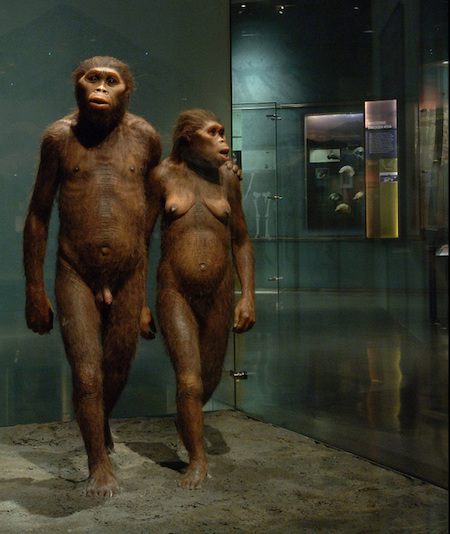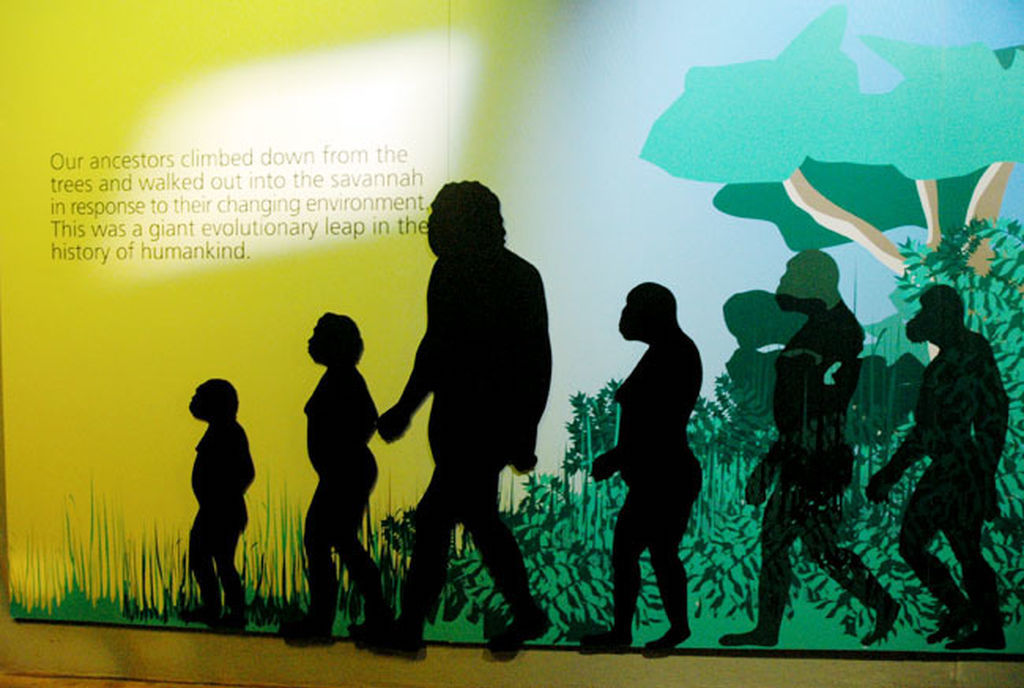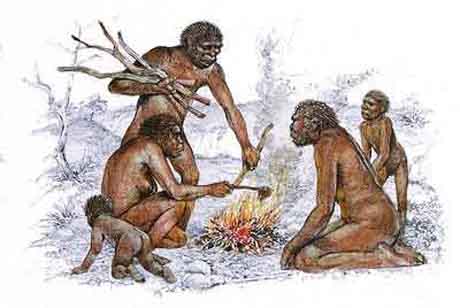 9Hominids (LUCY)
9Hominids (LUCY)

In 1974, a 3.2 million year old fossil was discovered that would become world famous: “Lucy.”
Classified as a hominid, Lucy was a short (under four feet tall), human-like ape whose brain size was about one third of our own.
Perhaps most importantly, Lucy represented a species of primate that was among the earliest to walk upright, on two feet.
Although other primates like chimps can walk upright in short bursts, Lucy could walk that way continuously.
Scientists keep discovering fossils of previously unknown species of hominids. Currently, about 20 are recognized, and these include human beings.
Evolution: From Early Primates to Hominids
Early Hominids were not that different from other primates. They probably lived a very similar lifestyle to other members of the primate family. Why is the adaptation to standing upright on two feet so important in our history?
Early Hominids were larger, ape-like primate that came down from the trees, most likely in search of food. Hominids first evolved in Africa during a period of climate change. As the climate became hotter and drier the trees and forests were giving way to grasslands. Primates that evolved the ability to walk on two feet were better adapted to life on the ground. Standing upright gave hominids several survival advantages, among these, the ability to see potential predators as well as prey at a distance.

Hominids: Adaptation
Lucy and her extended family were probably forced down from their original home in the trees when forests in Africa gave way to long stretches of grassy savannas.
On the ground Lucy was vulnerable to predators; by walking upright, she could spot danger at great distances.
Her hands were also free to carry food and possibly a weapon for defense.
Hominids: Fire!
Free hands also meant that Lucy’s descendents could grab a burning stick from a naturally occurring brush fire and take it with them to make their own fire.

What do You have in Common with Early Hominids?
Like Lucy and her family, you walk on two feet. Standing upright allows you to use sticks and stones as tools. You use your hands to point at things and to communicate.
WHAT’S NEXT?
A branch of Lucy’s family split off and evolved into modern humans.
Learn More
All about Lucy
https://iho.asu.edu/about/lucys-story
Bipedalism is the main characteristic that separates hominids like Lucy from earlier primates
Lucy’s possible ancestral status to Homo genus
Lucy lived 800,000 years after her species (Australopithecus afarensis) evolved. It's not known for sure which Australopithecus species gave rise to Homo - but since Homo evolved around 2.8 million years ago, it's possible that our two species are related in some way.
Lucy represented a major transition that is very important to us humans. She had a mixture of traits: some were ape-like and others were human-like. Lucy represents our first ancestor who walk confidently on two feet.
How Lucy changed our ideas of human evolution
http://time.com/4126011/lucy-australopithecus-discovery/
Comprehensive account of Lucy and her impact
http://www.bbc.com/earth/story/20141127-lucy-fossil-revealed-our-origins
